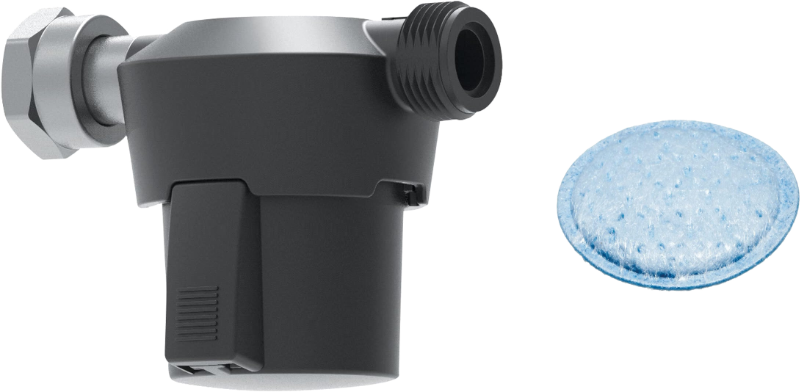Table of contents
Updated - November 23, 2024
Whether there is a gas leak, the gas bottle is simply (almost) empty or the installed Eis-Ex has overslept the icing in winter temperatures and therefore a gas consumer is not working as expected, this is the question that motorhome owners and campers ask themselves from time to time.
Symptomatology
The heater actually works, but suddenly it goes off, even though there is still gas sloshing around in the bottle. Then it comes back on for a while and acts as if nothing has happened, only to stop working again.
Such phenomena occur, for example, when either the gas cylinder is nearing the end or a gas filter downstream of the pressure reducer is dirty and therefore - in both cases - the gas pressure is no longer sufficient to supply the consumer with the appropriate pressure.
Gas filter
Gas filters consist of a thin fleece plate through which the gas from the cylinder flows after the pressure reducer, preventing contamination from entering the gas pipe and fine nozzles of the heater or gas stove.

Spare filters should always be on board so that they can be replaced if the worst comes to the worst. You know Murphy: it always happens at the worst possible time!
Icing
A frozen gas pressure regulator, also known as a (gas) pressure reducer, manifests itself in the abrupt failure of all gas consumers, e.g. usually when the heating is permanently running at full power in winter, the refrigerator is running on gas and the three-burner gas stove in the kitchen is also being used at full power to prepare sumptuous meals.

In this case, the evaporative cooling of the expanding gas volume is so great when the Ice-Ex is not active that the low outside temperatures, which are still in the plus range, accelerate the formation of ice and the gas flow finally stops.

Therefore, for such mammoth operations, switch on the Eis-Ex manually as a prophylactic measure to ward off such trouble from the outset.
Gas leak
A gas leak occurs rather rarely. If it does, it is usually after changes to the gas installation. For example, an external gas socket may have been retrofitted, a new consumer may have replaced an old one and the gas screw connections may not have been retightened tightly enough.
However, replacing a replacement cylinder can also be the cause of escaping gas if, for example, the built-in gas filter has been touched when the cylinder was removed or fitted and the screw connection has loosened.
Leaking hoses, because they are brittle, should rarely be the cause if you have adhered to the expiry dates printed on the connecting hoses.
Localization - the most cost-effective ...
A gas leak can be localized in a similarly simple way as a hole in a bicycle inner tube. No, you don't immerse the whole motorhome in a basin of water. It's even easier: an old atomizer, be it a perfume that you don't like anyway, a water atomizer for flowers, whatever is suitable for fine atomization.
One drop of detergent concentrate and 50 ml of water make a great spray solution to put an end to any gas leak. Commercially available leak detection spray has the same content, but is much more expensive.
... and technical variant
For those who like it technical, we recommend an inexpensive, yet good Gas detector recommended. The device detects butane, propane, methane and LPG in concentrations from 50 ppm.
The cheaper device detects, with identical sensitivity, all of the above gases except LPG.
Conclusion
The electronic version is faster and - in my opinion - safer, because the gooseneck sensor can also be used to measure in places that are barely visible, whereas observing soap bubbles that may form in these hidden places can be a time-consuming challenge with vague detection accuracy.
It is also faster because the response speed of the devices is quite high and the measuring frequency of 1 Hz allows the measuring points to be scanned quickly.